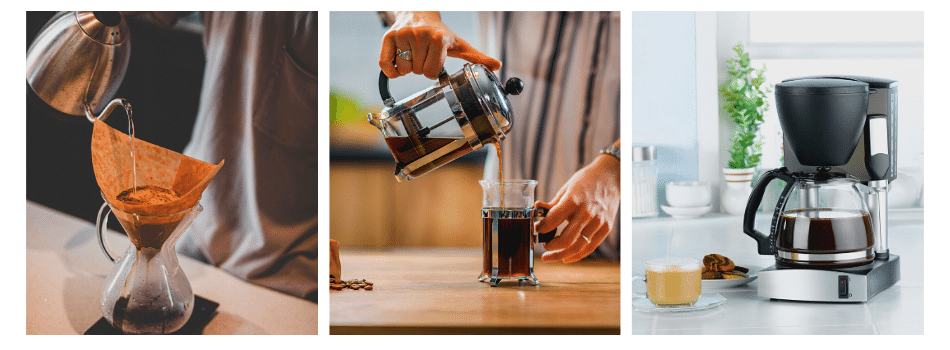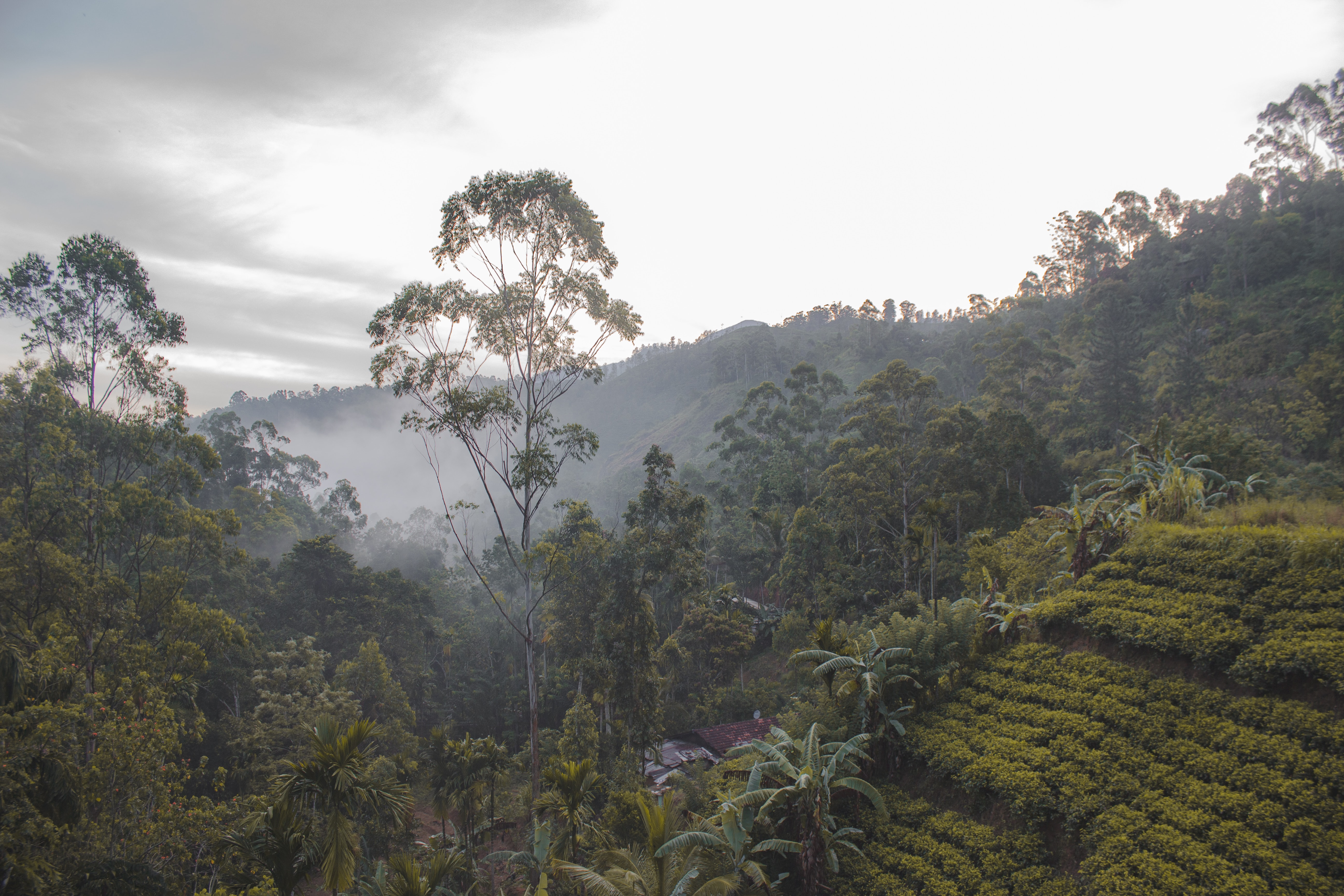Coffee 101: Get to Know Coffee
Welcome to Coffee 101 with Sky Mountain Coffee. Coffee is a rich part of most people’s everyday life. Before it gets to your cup, it goes through a unique journey. If you’re just beginning your love affair with coffee or have been a serious drinker for years, get to know a little bit more about your beverage of choice. Start your coffee adventure by getting to know this impressive beverage.
What’s the History of Coffee?
Humans discovered coffee in Ethiopia, Northern Africa. A popular legend tells the tale of a goat herder Kaldi who observed his flock behaving more energetic than usual after eating the cherries of a tree with green, waxy leaves. He tasted the berries and received the same feeling.
The news of this plant’s “power” spread quickly.
Coffee cultivation and trade started on the Arabian Peninsula in the 16th-century. Those in Egypt, Syria, Persia, and Turkey consumed it. In the 17th-century, the golden era of coffee began with coffee houses becoming social gathering spots across Europe.
Coffee wouldn’t arrive in the Americas until a French military captain brought a single plant across the ocean to the Caribbean in the 1700s.
How Does Coffee Grow?
Coffee is the seed of the cherry fruit from the evergreen coffee tree. The tree prefers and flourishes well in fertile soil and mild temperatures. It grows in the “coffee belt,” a realm from the Tropic of Cancer to the Tropic of Capricorn.
Coffee trees can grow to 20 feet, and growers prune them to 8 to 10 feet but are pruned to 8-10 feet to simplify harvesting. Coffee cherries ripen at different times so most coffee is hand-picked.
There are two species of coffee trees (and beans):
-
Coffea Arabica: Arabica coffee trees grow best at altitudes over 3000 feet and produce superior quality coffees in terms of flavor and aroma.
-
Coffea Robusta: Robusta coffee trees grow at lower elevations and are easier to grow, as they are more disease-resistant. Because of its attributes, these trees produce higher yields. Robusta coffee has twice the caffeine of Arabica, so espresso blends often use it.
What Is Shade Grown Coffee?
Shade growing preserves the native forest and biodiversity. It’s still a method that many farmers use. In the 1970s, the coffee community introduced new, sun-tolerant coffee tree varieties to increase production and address coffee leaf rust fungus. The removal of shade trees or cutting down native forests can expand the growing area and shorten fruit ripening time.These cultivation practices often hurt the environment and are not sustainable. As a result, a countertrend supporting shade-grown coffee emerged. If you see “shade-grown” on coffee packaging, know these things:
-
There is no standard definition of the term “shade-grown,” and can mean as little as 10% shade cover.
-
The Smithsonian Bird-Friendly certification specifically identifies shade-grown coffees as well as organic and is the most specific and rigorous regarding shade growing.
What Is Coffee Roasting?
There are two ways to roast coffee—drum or hot air roasting. Green coffee beans hold aroma and flavor inside. To bring it out, coffee producers roast it for 12 to 18 minutes at temperatures between 400 and 460 degrees.
The process caramelizes sugars and carbohydrates in the bean to produce the browned color and aromas. Roasting causes the beans to plump 50% in size while losing around 16% water weight.
There are four roast levels: light, medium, dark medium and dark.
What Is Micro-Roasting?
Micro-roasting is a small batch roasting that you’ll only get from a boutique coffee producer. The large, commercial coffee companies use large roasters that produce thousands of cups an hour.
Micro-roasting is similar to craft brewing of beer. It’s a small, specialty roast that ensures the greatest freshness, consistency and brings out the best flavor and aroma of the coffee bean. We use micro-roasting exclusively for our coffee. The coffee you purchase from us has likely only been roasted a few days before.
What Are Taste, Flavor, Aroma, and Body?
In describing coffee, we use terms like taste, aroma and flavor. Here’s what they mean.
-
Taste: The senses inside your mouth. The acidity of the taste should deliver a dryness to the tongue, providing a sharp, bright and vibrant quality that is desirable in a quality coffee. Any coffee lacking acidity is flat.
-
Flavor: The combination of chemical components perceived by taste buds and smells. It’s the overall perception of acidity, aroma and body. There are many flavor attributes with the most desirable being bright, dry, sharp, snappy, caramelly, chocolaty, delicate, earthy, fragrant, fruity, mellow, nutty, spicy, sweet, wildness and winy. Some undesirable flavors include bitter, carbony, dirty, musty, sour, turpeny, watery, etc.
-
Aroma: The engagement of the sense of smell to enhance the basic tastes of sweet, sour, salty and bitter with the complexities of “floral, winy, vanilla, herbal, etc.”
-
Body: A feeling of thickness or richness in your mouth (i.e., the difference between whole milk and water).
Why Does Coffee Freshness Matter?
For coffee to remain fresh, you must properly store it. That’s true of the entire process. The sooner it arrives to you from roasting, the fresher it will be, which is why we micro-roast. When it reaches you, use a cool, dry and air-tight container. The freshness of coffee will dissipate over time, so it’s best to enjoy it within 7 to 10 days after you purchase it. Freezing it will not save it from going stale.
How Can You Brew Coffee?

There are many ways to end up with a cup full of goodness. The most popular options are:
-
Pour-overs
-
French Press
-
Vacuum pots
-
Filter drip machines
For any way you brew, you’ll need 2 tablespoons of coffee for every 6-ounce cup.
What Are Some Coffee Certifications?
Certifications ensure that growers are following standards in coffee production.
Bird-Friendly (Smithsonian Migratory Bird Center)
This certification signifies the growers followed stringent environmental standards. Any coffee receiving this designation must also be organic certified. Certification standards cover everything from canopy height to insect biodiversity to protect the wildlife within a coffee-growing area.
USDA Organic
This designation indicates producers eliminated or reduced chemical inputs. Typically, organic coffee grows under some shade cover, preserving biodiversity.
Rainforest Alliance
This criterion involves environmental standards. For a coffee to earn this seal, it must have 30% certified beans.
Fair Trade USA Certified
This certification means coffee production was via a democratic cooperative and without child labor. There are also restrictions on using herbicides and pesticides, and the final exporter receives a minimum price and a price premium of 20¢ per pound.
Have More Coffee Questions?
Be sure to read our blog as we go in-depth on specialty grade coffee, roast levels, health benefits, caffeination and more!
Ready to purchase fresh, micro-roasted coffee? Shop Now!



